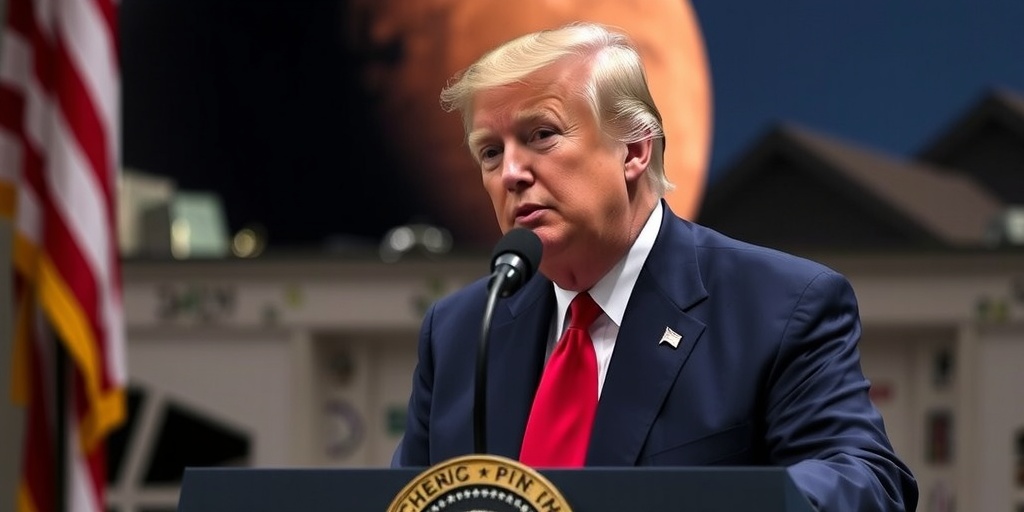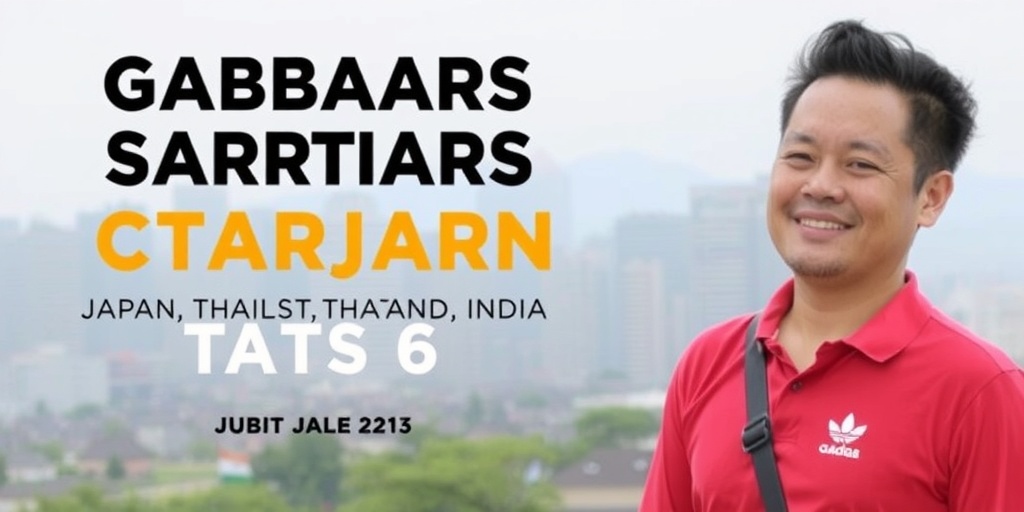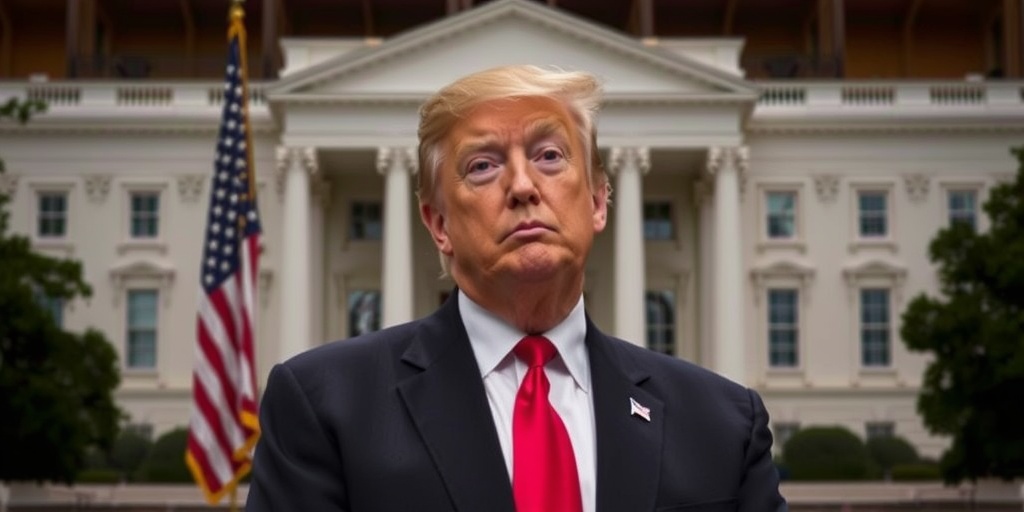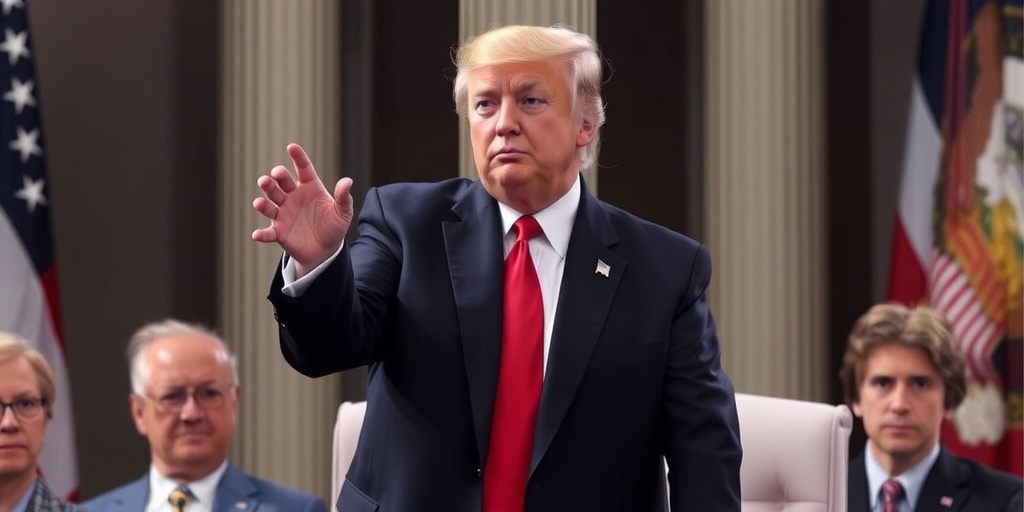Now Reading: Trump Targets Smithsonian in Race and Biology Debate
-
01
Trump Targets Smithsonian in Race and Biology Debate
Trump Targets Smithsonian in Race and Biology Debate

Trump’s Executive Order Targets Smithsonian Sculpture Exhibition on Race
In a move that has sparked significant debate, President Trump issued an executive order asserting that the Smithsonian Institution had become influenced by a “divisive, race-centered ideology.” The order specifically called out an exhibition at the Smithsonian American Art Museum, titled “The Shape of Power: Stories of Race and American Sculpture.” This exhibition examines how sculpture has shaped and mirrored societal attitudes toward race in the United States over the past two centuries.
The president’s executive order expressed concerns that the exhibit conveys the principle that race is not rooted in biological realities but is rather a social construct, stating that “Race is a human invention.” In light of this, numerous scholars have reacted, questioning the rationale behind the executive order, especially given that the idea of race as a social construct is widely endorsed among contemporary scientists and historians. Samuel J. Redman, a history professor at the University of Massachusetts Amherst, highlighted that the executive order appears out of touch with current scholarly consensus. He remarked that pseudoscientific attempts to classify races, especially those promoting the superiority of certain groups, have historical precedents in ideologies seen in Nazi Germany and the eugenics movement.
When pressed for a statement, the White House directed reporters back to the executive order itself. The president previously indicated during his inaugural address that he would work to eliminate efforts aimed at “socially engineering race and gender into every aspect of public and private life.”
The controversial statement regarding race being a human invention appears to emanate from text within the exhibition, which notes the genetic similarities among humans and references the American Association of Biological Anthropologists’ stance on race and racism. The association’s statement contends that race does not accurately represent human biological diversity, emphasizing that the concept of race is entrenched in systems that supported colonialism and discrimination over centuries.
“Race does not provide an accurate representation of human biological variation,” the statement elaborates, asserting that humans cannot be biologically categorized into distinct racial types. Instead, the website expresses that race is a social reality that has evolved due to discriminatory practices and policies. As such, while race may be a social construct, the impact of racism is very real, with profound biological and sociocultural consequences.
Trump’s executive order originated during a period in which the administration was focusing on removing diversity, equity, and inclusion initiatives from federal engagement. Among the order’s grievances regarding the exhibition was the assertion that it claimed societies, including the U.S., have historically used race to enforce systems of power and disenfranchisement, suggesting that sculpture played a role in promoting scientific racism.
Museum officials, however, have remained tight-lipped regarding the executive order and the exhibition itself, which opened shortly after the presidential election in November to positive critical reception and is set to run through September 14.
Art historian James Smalls, who contributed his expertise to the exhibition, acknowledged that sculpture has historically been employed to propagate racial hierarchies. He pointed to the works of Malvina Hoffman, whose 1930s bronze sculptures — created for a “Races of Mankind” exhibit at the Field Museum in Chicago — were designed to illustrate various racial types. Although Hoffman herself questioned the biological underpinnings of race, her sculptures were seen by millions over the decades, perpetuating the erroneous classification of human differences into distinct races.
Smalls expressed concern that the executive order effectively stifles critical discourse, insisting that it promotes a singular narrative of American history as one of unmitigated greatness. “No country is great all the time,” he noted, emphasizing the need for an inclusive dialogue that acknowledges complex histories.
Artists featured in the exhibition have also contested the notion that it fosters divisiveness. Roberto Lugo, a Puerto Rican artist whose work features prominently in its promotions, remarked that the exhibition is designed to foster connection and understanding among diverse narratives. His sculpture, a cast of his own body adorned with cultural patterns, serves as a means of representation, embodying his lived experiences.
Nicholas Galanin, an Indigenous artist contributing to the exhibition, similarly underscored the importance of museums as spaces for sharing diverse narratives rather than suppressing them for political gains. He argued that engaging critically with narratives tied to systems of power doesn’t create division; rather, it restores equilibrium.
In an introduction to the exhibition’s catalog, Stephanie Stebich, the former director of the museum, articulated the exhibition’s objective: to invite visitors into a candid dialogue surrounding the complexities of race and racism, and to honestly reflect on the role of art and museums in shaping these narratives.
As the exhibition continues to run, it has ignited a necessary conversation about the intersections of art, race, and history, urging society to confront and dissect the foundations of its shared past.
Stay Informed With the Latest & Most Important News
Previous Post
Next Post
-
 01New technology breakthrough has everyone talking right now
01New technology breakthrough has everyone talking right now -
 02Unbelievable life hack everyone needs to try today
02Unbelievable life hack everyone needs to try today -
 03Fascinating discovery found buried deep beneath the ocean
03Fascinating discovery found buried deep beneath the ocean -
 04Man invents genius device that solves everyday problems
04Man invents genius device that solves everyday problems -
 05Shocking discovery that changes what we know forever
05Shocking discovery that changes what we know forever -
 06Internet goes wild over celebrity’s unexpected fashion choice
06Internet goes wild over celebrity’s unexpected fashion choice -
 07Rare animal sighting stuns scientists and wildlife lovers
07Rare animal sighting stuns scientists and wildlife lovers





















